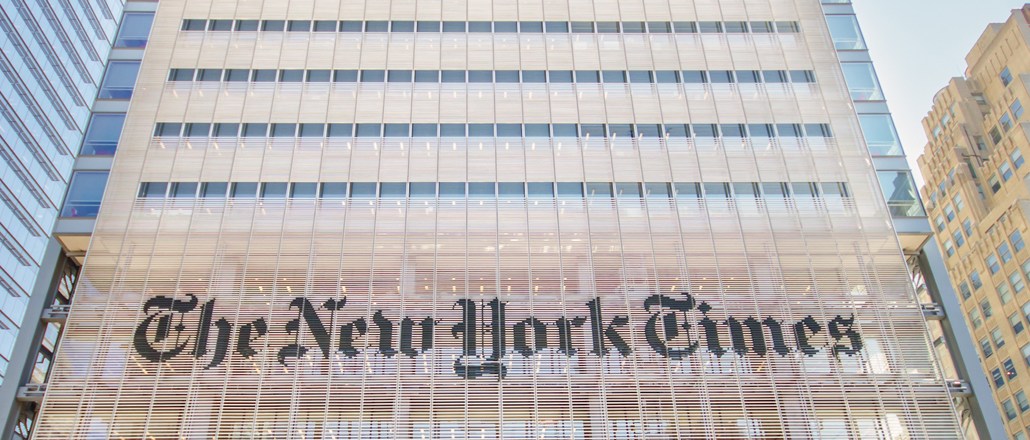Save 50% on a 3-month Digiday+ membership. Ends Dec 12.

A lot has changed since media watchers were writing The New York Times’ obituary. The venerable newspaper has brought in new ad leadership. It’s making moves to think Web-first after its internal Innovation Report criticized the newsroom as too print-centric. The Times is projecting 1 million digital subscribers this year, and it has won praise for its native ad product.
Digital revenue is on the upswing after a decline of 4.3 percent in 2013, the parent Times Co. reported last week. For all of 2014, digital advertising increased 12 percent on the strength of video, mobile and native advertising. Those numbers reflect a warmer feeling from agencies. You can feel the change in the leadership under Times Co. president and CEO Mark Thompson and evp of advertising Meredith Levien, said Robin Steinberg, evp at MediaVest.
“In terms of a working relationship, they are a nicer, kinder New York Times to the marketplace,” Steinberg said. “But they still have their strict standards. They’re still operating under the stringent guidelines of quality, trusted authentic journalism first. There’s always going to be things we can’t do, but they’re open for conversation where they weren’t two years ago.”
Native ads are controversial because by mimicking editorial content, they have the potential to confuse readers. Given its journalistic heritage, the Times was understandably ambivalent about the format and late to the game in introducing a native offering, which it calls Paid Posts. But with its T Brand Studio, which has been producing multilayered, narrative-style ads for clients like Cole Haan and Shell, the Times has managed to challenge the notion that native ads can’t be as good as editorial content while avoiding any major controversies.
There also are concerns that the Times’ commitment to quality can hold back its growth, though. The Times’ native ads are among the best in the industry, but the Times prefers to create the content themselves, and the high cost could put off some advertisers, said Steve Rubel, chief content strategist at Edelman. An entry-level native ad product that could make the product accessible to a wider range of advertisers.
Getting their native ads more widely distributed is also a challenge for publishers, and the Times is no exception. Rubel said he’d like to see the Times do more on that front, and one way to do that is create a distribution network of like sites.
“What I’d like to see next is think about how they build in social amplification,” he said. “They’re creating the content to be consumed on the Times site. I don’t know if people are seeing that content and wanting to share it.”
The Times’ video strategy is also a work in progress. Like other publishers, it has been making a big push into that realm. Last year, it introduced a hub on its site with 14 channels devoted to video. The hub is a one-stop shop for the Times’ new, original series and ones based on existing franchises and spanning the range of its editorial breadth, from politics to business to style. The Times has primarily promoted its video through its own hub, which is in keeping with its quality-over-quantity strategy. From the advertiser standpoint, that naturally limits the video’s ability to be seen and hence scale.
“From a digital footprint standpoint, they drive a lot of scale,” Steinberg said. In terms of video, she added, “there’s still opportunity for growth.”
“I think a lot of publishers are struggling to promote their video products in general,” said Lesley Pinkney, vp of digital at Walton Isaacson. “The [New York Times] is more subtle, which I like as a consumer, but I can see how video becomes an afterthought and less visible.”
More in Media

As big brands flood the podcast ad space, startups are refining strategies to stand out
While a influx of big advertisers is good news for podcast companies, it also makes it more challenging for small- to mid-sized brands to stand out in the space.

Meta enters AI licensing fray, striking deals with People Inc., USA Today Co. and more
The platform has secured seven multi-year deals with publishers including CNN, Fox News, People Inc., USA Today Co to incorporate their content into its large language model (LLM) Llama.

European publishers say the Digital Omnibus ‘cookie fix’ leaves them worse off
The European Union’s attempt at a legislative spring clean for Europe’s web of data privacy rules, has landed flat with publishers.





